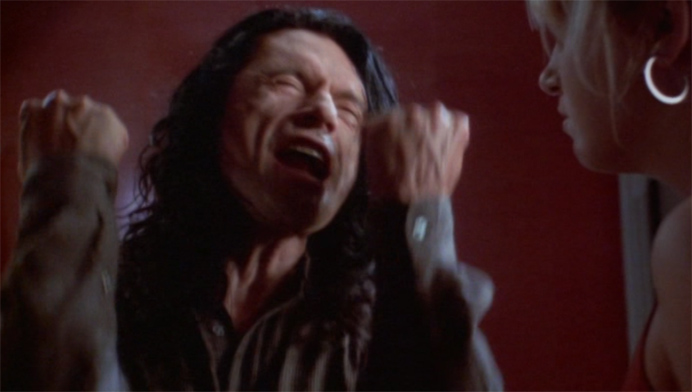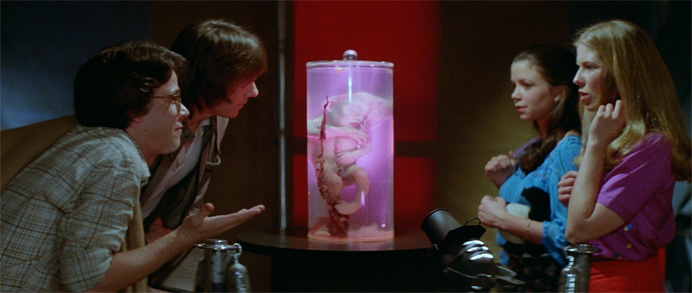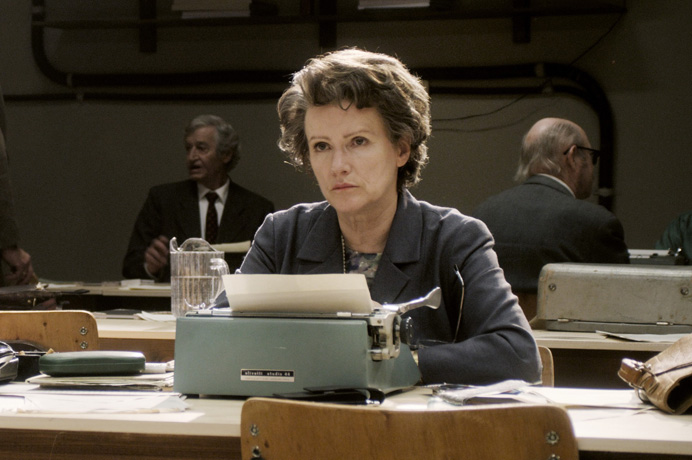
In a movie review, you might find fleshed out descriptions of the whizzing visuals on screen. After all, reviewers write what they see in a movie. And movies can have everything from vibrant camera work to dizzying effects to catchy credits with high-class animation. My attention, however, isn’t focused on these things, because I don’t see any of that when I sit down to watch a movie. I’m a blind film critic, and I evaluate different aspects of movies—word choice, tone of voice, dialogue, musical score, and storytelling.
To watch movies, I use a special service for the blind and visually impaired, now steadily growing in availability, called Audio Description, which describes key visual elements during the natural pauses between dialogue. Audio Description describes costumes, gestures, scene changes, and facial expressions. Personally, I pay especially careful attention to how the audio description describes a good-looking man. Being gay, my vital ear is always tuned in extra hard to a description of a hunky African American on screen who could potentially be my soul mate if I were lucky enough to actually come into contact with them. (For instance, Denzel Washington.)
Audio Description is both an art and a science. The process of describing a film is quite a long one. After the filmmaker finishes a movie, they send it off to whatever company they choose that describes movies. Trained describers watch the movie a minimum of three times before carefully compiling a script to match the pauses in dialogue. A writer writes out the descriptions, and when the script is completed, it and the movie are sent to the audio description production team where a description track is recorded. Once the process is completed, which usually takes about a week, the described film is sent back to the studio where they can distribute it to movie theaters, and later on DVD—if the studio even decides to put the Audio Description track on the DVD. Many don’t.
Because audio description is such a careful practice, there’s a lot about it to review and evaluate. How many words is the describer using? Is he using too many words when the music could’ve just as easily spoke for the actions? Does the describer have appropriate inflections? Is the vocabulary age appropriate? Are the words too simple or too complicated for the film? All of the above can really make a world of difference when a blind person is listening to a movie. If there’s a hilarious scene happening in a comedy and the audio describer keeps using complicated words to describe a simple witty action, then the Audio Description is not a good one. In this case, the description detracts the comedy effect, and it should be critically pointed out.
A lot of people don’t know about Audio Description—newspapers and magazines included. And so my pitch, resume, and writing samples have to be longer, because I have to make it very clear that I’ll be reviewing the same movie as everyone else, but I’ll be covering it from a different angle.
Once I’m on board, there are some things that are different and will always be different about how I operate. Usually, critics are anonymous. They show up at theaters unannounced, and have the ability to just pick any movie they want to see and go see it. I don’t have that luxury. I have to first make sure Audio Description is available. I could review a movie without Audio Description, but that wouldn’t be fair—I could miss what happened on screen at a very crucial point.
To find showings with Audio Description available, I turn to CaptionFish, a service that finds described and captioned feature films near your zip code. After I gather the information, including the date and exact time the described film will air, I have to call the theater to confirm that the online information is truly accurate. Once everything is cleared, I call ADA Paratransit to whisk me away on a door-to-door van ride to the movie theater (after calling in and scheduling a trip 24 hours ahead of time first). When I arrive, the manager issues me my reviewers ticket, and I head into the theater with my Audio Description FM headset on, ready to dissect the meaty goods of a feature flick.
But it’s often difficult for me to even get a reviewers ticket, if it’s a movie theater I’ve never been to before. It usually takes a host of phone calls to the manager—who then calls my editor, who then calls him back and explains my validity with the newspaper or magazine—as well as special accommodations as far as issuing reviewers tickets, since there’s no standard for Audio Description critics. This could take anywhere from a few days to a few weeks, so it’s a good thing I’m a patient guy.
Even though life as an Audio Description critic can be logistically frustrating—what with barrages of telephone calls from movie studios trying to confirm if I’m really a critic, and minor frustrations with ADA Paratransit arriving early or late—I enjoy using my brain to dissect the unexpected, as well as shed some light on the reality of accessibility. And it’s all worth it to be able to do what I do.
The people whom I write for appreciate my unique angle, and I enjoy bringing it to the table. Through my reviews, people get a chance to experience a movie through different eyes. The reward is not in getting to see a movie before others, but in lending my appraising ears to the medium.
I very much look forward to posting reviews here at Smug Film!



